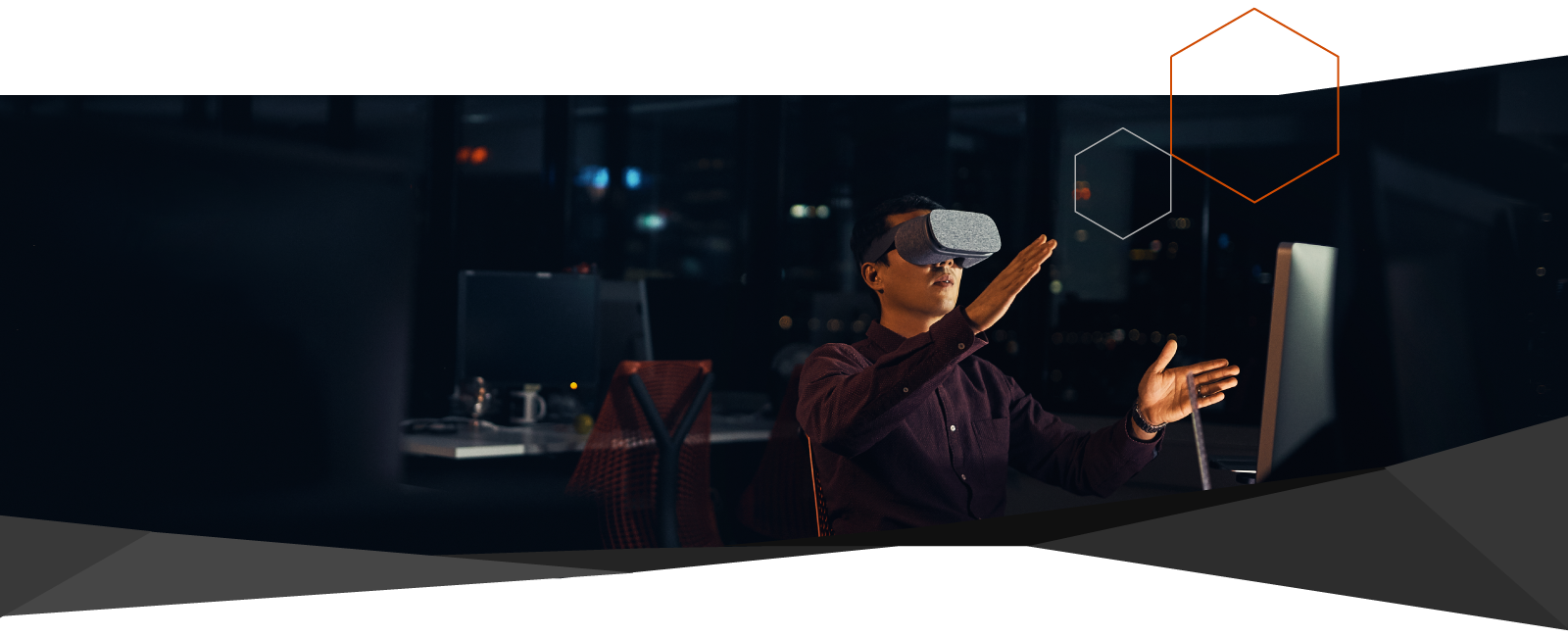{{item.title}}

The world is busy creating human simulations in the metaverse. In parallel, we are questioning if we are already in a simulation. This is not a wacky conspiracy theory; renowned scientists have been asking this question for a while. Nick Bostrum, a philosopher at Oxford University, is perhaps best known for his detailed argument proposing that we may already be in a simulation1. Regardless of where you sit with this argument – and I must say, it is challenging to pick a side – simulated reality through immersive technology such as VR headsets, is already here.
So, what is the metaverse, in the fullest sense of the word? Are humans really ready for this technological leap, and if we are, how can businesses use it to gain a competitive advantage?
A good definition is getting crisper as it moves from abstract concept to tangible ‘use case.’ Think of it as the 3D web. Everything we do online today but doing it all in immersive 3D via virtual and augmented reality. You will navigate a stylised version of yourself, an avatar, through virtual spaces to work or play. All senses are engaged at the same time, giving a much richer – lifelike – experience. It will likely have its own economy enabled by digital currencies and nonfungible tokens (NFTs). By 2026, research firm Gartner predicts that 25% of people will spend at least one hour a day in the metaverse2.
Some businesses are already using metaverse technology. Last year’s Australian Open metaverse experience made headlines as well as revenue. Its Art Ball NFT collection generated over $5.5million3. Beauty retailer Mecca has worked with specialist studio Phoria on multiple augmented reality activations4.
Using metaverse technology is one thing, but when it progresses – and it won't be long – to integrating neurally with direct interfaces, and in one single connected metaverse, we will face all sorts of challenges. It will be what many are calling the next version of the internet. A 180-degree turn. And it changes everything.
For me, one of the greatest concerns will be the ability to detach. There have been cultural practices and beliefs that have created immersive experiences for humans for millennia. In most cases, with a varying degree of ease, we could detach ourselves from them if we so desired. With a full neuron-immersing metaverse, with its extra layer of brain stimulation, it will be a harder choice for many people. We must anticipate these new risks, as well as opportunities, to safeguard vulnerable members of society, while optimising the value.
Innovation will always have the lead on regulation. Our experience with the rise of social media and efforts to limit its harmful effects, tells us this. But while some new technologies and their applications have caught us by surprise from time to time, it shouldn’t be a stretch to foresee the potential impact of the metaverse on the human experience.
As individuals, we must consider how we engage our children in critical thinking. Consider the implications to our interpersonal relationships, skills, and social constructs. As socially orientated creatures, partial to meaningful eye contact, what will being on our own in a virtual world mean for our happiness? Our brains, over time, might adapt to that, but what of the short-to-medium term?
There are so many opportunities for business. In fact, a study published in December 2022 has found that 64% of Australian businesses are planning to invest in the metaverse in the next six to 12 months while 56% of U.S. businesses and 55% of U.K. businesses are expected to do so in the same time frame5. In short, it will create new and transformative ways to interact, engage and transact with customers, even with physical sensations through haptic technology, but from the comfort of home. It will provide a source of new revenue – customers will be able to travel without moving, for example, or buy clothes knowing that if it fits their accurately modelled avatar, it will fit them in real life too. Businesses will save on costs associated with physical infrastructure and maintenance, such as rent, utilities and upkeep, through digital twins. Workplace training and collaborative work will be highly interactive and engaging, unimpeded by location. Bill Gates thinks that we will move from the current 2D virtual meetings of Zoom and similar, to the 3D metaverse within the next couple of years6.
For a more personal experience, I recommend this short ‘Day in the Life’ example written by a colleague, of how a person could take advantage of the metaverse during the course of an average day.
Intrigued? There are some measured actions you can take to dip your toe. In the short term: get up to speed with the metaverse’s concepts, develop a strategy and test the waters by introducing immersive technologies to low-risk, low-investment activities. This could include engaging with your workforce, improving onboarding and training outcomes and selectively allowing external stakeholders to experience your brand. In the long term: focus on trust with consumers and other stakeholders, consider ways to manage the increasing skills gap in the market and examine how you create a consistent brand experience across physical and digital.
What do you think? Will you be an early adopter? What are your thoughts on how this will affect the human condition? I’d love to hear.
Get the latest in your inbox weekly. Sign up for the Digital Pulse newsletter.
Sign Up
Theme Enter theme here
PwC Australia
References

© 2017 - 2025 PwC. All rights reserved. PwC refers to the PwC network and/or one or more of its member firms, each of which is a separate legal entity. Please see www.pwc.com/structure for further details. Liability limited by a scheme approved under Professional Standards Legislation.
